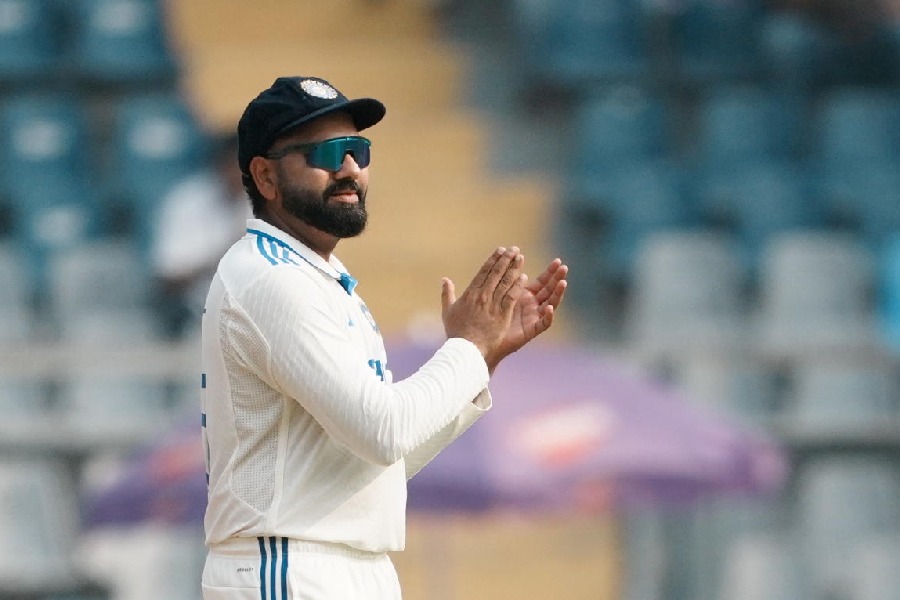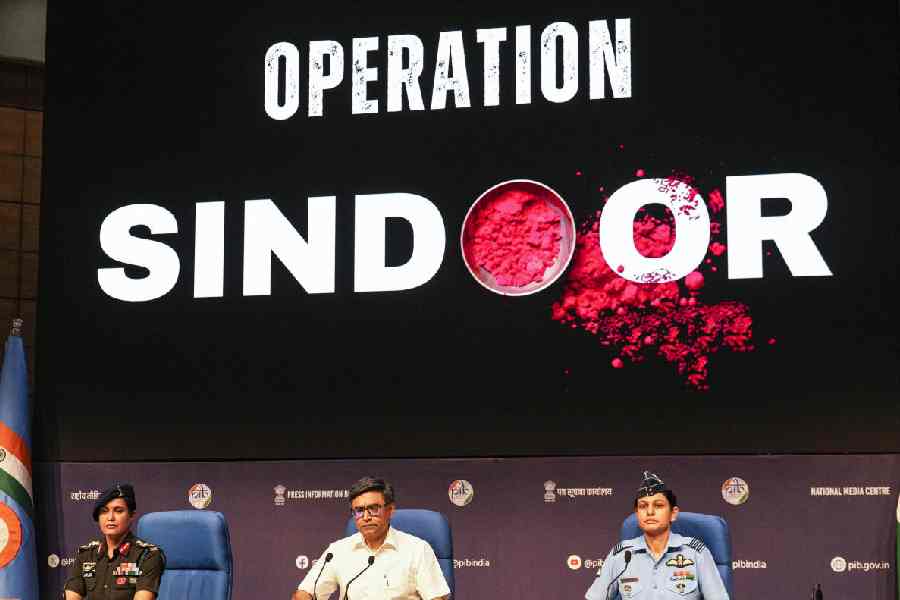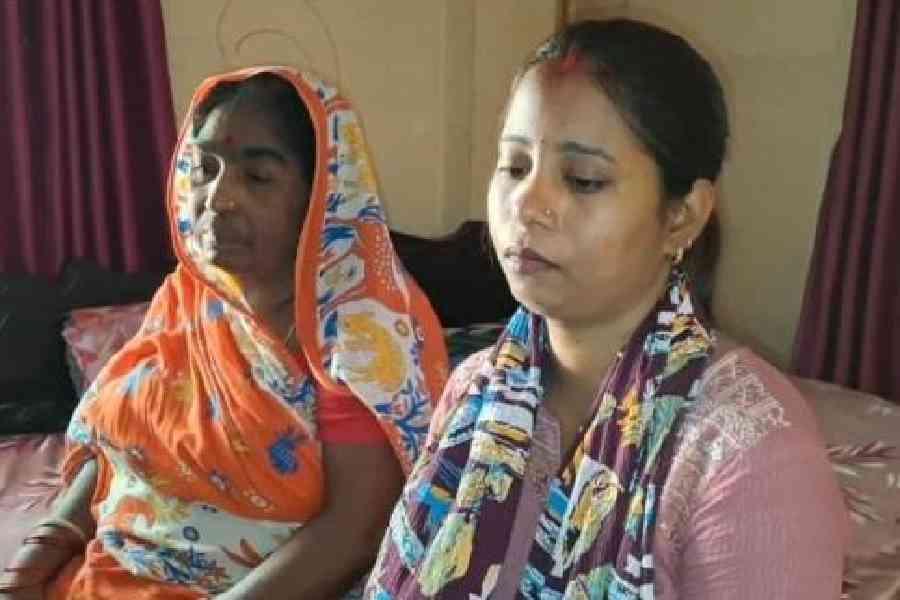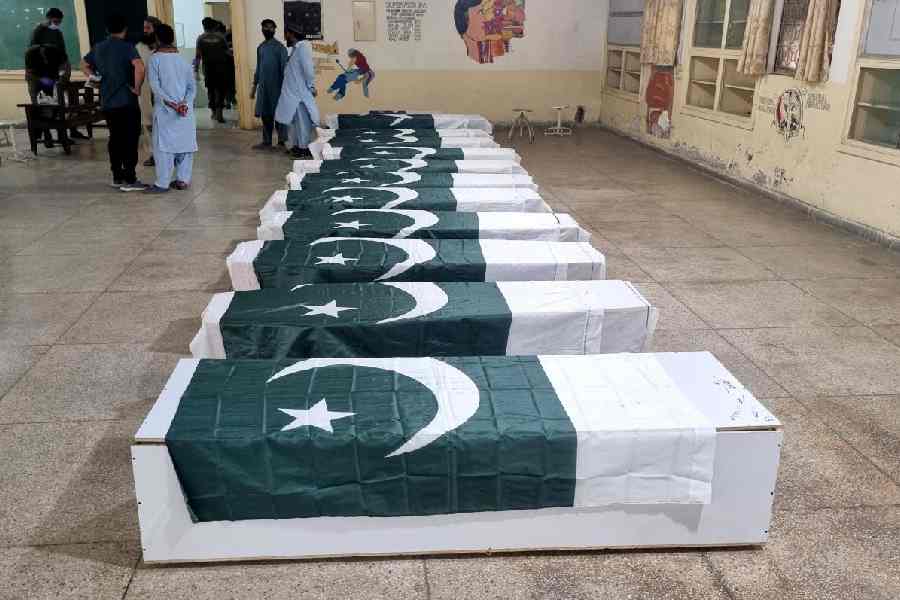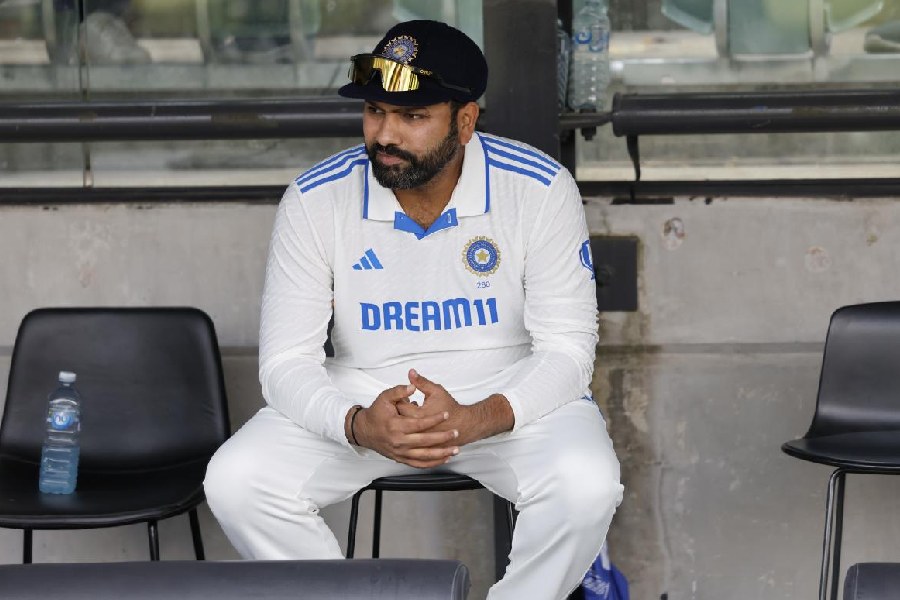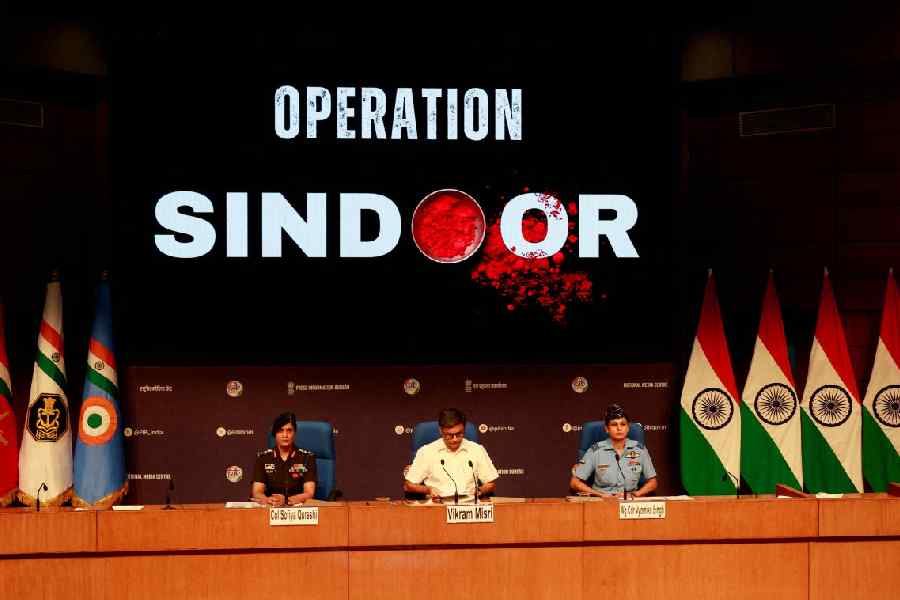 |
“Avik and I share a similar eye for aesthetics but he is far more minimalist than I am. There is an austerity about him that is reflected in his lifestyle as well,” says Rituparno Ghosh about his long-time cinematographer friend.
You know Rituparno is not off the mark as soon as you step into Avik’s apartment off Prince Anwar Shah Road. A few black-and-white photo-frames along with a lounge chair and a divan against a bamboo wall form the focal point of his living room. It’s not Spartan, but it’s not lavish either. Avik lets the daylight filter in through the windows and wash the room.
“I like working with both natural and artificial light. I love to create natural light with artificial light and sometimes tamper natural light to make it a bit artificial for the sake of storytelling,” says the DoP of Bunty Aur Babli and 12 Rituparno Ghosh films.
Avik has tried both techniques in Aniruddha Roy Chowdhury’s Antaheen, releasing on January 23. Most of Antaheen’s natural light interiors have been done with artificial light. Besides, the film starring Rahul Bose, Sharmila Tagore and Aparna Sen has a shine that is markedly different from the visual opulence of Rituparno’s films.
Avik throws light on the Antaheen look: “It has been a different experience for me. There is a photographic gloss that has been consciously created. The film is very urban. I felt the people were more important than the plot in this film. The people are like floating in an urban sea. They are less defined, so we used soft focus and shallow depth-of-field to communicate that…. The kind of gloss you see in Hindi films is made with huge budgets. Here, we try to recreate the same look with very low budgets.”
The cinematic journey began with Rituparno’s Asukh about 10 years ago, after Avik shot the Boroline ads for Rituparno. They have since made Utsab, Titli, Shubha Mahurat, Chokher Bali, Raincoat, Antarmahal, Dosor, Khela, The Last Lear and the yet-to-release Sunglass and Abohoman.
“These days Ritu and I spend a day discussing the script and deciding on the look, and that’s about it. After that I communicate with the art director and costume designer,” he says. Of the dozen, Avik is especially fond of The Last Lear. “It’s stylistically different. We tried something new… like suddenly creating a theatrical zone in an ordinary setting.”
The two films that Avik feels took him places are Patalghar and Chokher Bali. “Bunty Aur Babli got me a place in commercial films. But it was after Chokher Bali that several cinematographers of the country told me they liked my work a lot... people like Anil Mehta and Ravi K. Chandran.”
In Bollywood, the directors he would like to work with are Vishal Bhardwaj and Mani Ratnam. But the success of Bunty Aur Babli hasn’t been able to lure him to Mumbai. Avik would rather do films in Bengal that people will remember rather than bite into the Bollywood bait and shoot forgettable big-budget films.
This is also necessary in order to leave his stamp on a body of work. “Every cinematographer should have an individual style. Some people tell me that they recognise my work while watching a film. This style is about how you do a thing. For instance, how you choose to shoot a close-up — which lens to use, from which angle to shoot, how to use the light, how to use the foreground-background relation…. These are decisions that you make and stick to.”
Sometimes the way Avik visualises a scene is very different from the director’s but those are differences that he sorts out during the homework sessions. “I too have a story to tell in a film. It’s a visual story. It may not coincide with the director’s story but it can run parallel.”
Now, finding his own directorial voice has become necessary. Avik’s first film Bhoomi (in Hindi) tracks the journey of three boys from three regions of India. The underlying theme is the Tricolour — saffron represents central India, green the Northeast and white Kashmir. “It’s a very political film,” he says, and it is unlike what he has been doing for so long.
“Maybe that’s why I wanted to get away from what I do and make this film. I haven’t made it in the art-house style at all. What’s the use if people don’t see the film? Bhoomi has a very strong storyline. There’s a lot of pace. It’s like a roller-coaster ride,” he says. His second film — tentatively titled Ekti Tarar Khonje — will be an urban thriller around love and relationships with a bit of magic realism. “Ankur Khanna is playing the lead. He is a small-town boy who comes to the city and confronts a different reality. In a way, it’s a gangster film too,” says Avik.
The switch from DoP to director has been smooth because he had forgotten he was a cinematographer while shooting! “I did none of those things that I have always wanted to do in other directors’ films but couldn’t,” he says.
The quest to find an individual directorial voice is clearly on. That may explain why Rituparno says: “When Avik will make a film, I know it will look very different from my films.”
Avik on Rani mukerji
Rani is a very instinctive actress. She is not at all fussy about the way she looks and that gives a great liberty to cinematography. You can light her the way you want. And she can change herself so drastically before the camera. There’s a total metamorphosis.
Avik on Aishwarya rai bachchan
Ash was there is in the item song (Kajra re) in Bunty Aur Babli. But in Chokher Bali and Raincoat, we tried to make her look very different, not cosmetic at all. We even gave her under-eye shadow in Raincoat to make her look tired and she had no problem at all. I think she is a gifted beauty.
A FEW FACTS
- School: Durgapur Boys’ High School, Durgapur
- College: B.Sc (chemistry) from Gurudas College, Beleghata
- Formal training: Studied cinematography at FTII Pune
- Started out with: Ad films in 1994. Has shot and directed around 500 ad films
- First film as cinematographer: Rituparno Ghosh’s Asukh
- Influences: Subrata Mitra (Ray’s man), Conrad Hall (American Beauty, Panic Room) and Vittorio Storaro (Apocalypse Now, The Last Emperor)
- Turns director with: Hindi film Bhoomi (in post-production stage)
- Dream project: A period drama tracing the history of organised crime, from the thagee of the early 19th century to the present-day underworld. It will be set in central India
Tips for upcoming cinematographers:
- One shouldn’t think about the camerawork only, think about the whole film. I believe that you can’t have good cinematography in a bad film.
- Try to enrich the film from every aspect. Help the other departments.
- Flexibility is important. You should be able to adapt yourself to different kinds of directors and their work.
- The trend I have noticed among many upcoming cinematographers in our country is to unnecessarily beautify things. It looks very cosmetic and it destroys the audience’s eye. You need not do that. You can have gritty cinematography even in a very commercial film.
 |
Rituparno Ghosh
From the time we started working together, Avik had a clarity of thought. He was very confident but there was no arrogance. Since both of us come from an advertising background, we love to create a beautiful look. Our aesthetics are similar.... Avik also has a very refined technical sense and the kind of production value he brings to the low-budget films we make is tremendous. For instance, Chokher Bali and Antarmahal were both period films and we had used the same props, sets and costumes but despite that Avik managed to establish a difference between the two.
In my films, I especially liked his work in Raincoat, Dosor, Antarmahal and Abohoman. I remember Ash had got an award for Raincoat in London and in her acceptance speech she had thanked both me and Avik.
 |
Ravi K. Chandran
(DoP of Dil Chahta Hai, Black, Rab Ne Bana Di Jodi, Ghajini)
I liked Avik’s work in most of his films, especially Chokher Bali. The lighting and compositions were fantastic. He made me feel very insecure and jealous! I liked his work so much that I went to his set to meet him when he was shooting in Mumbai. He is very knowledgeable about cinema. He loves cinema, loves to experiment. And the best thing about him is that he doesn’t get sucked into the big Bollywood films, unlike me!
 |
Aki Narula
(costume designer, Bunty Aur Babli)
I think Avikda is the most talented DoP in the country today. I worked with him in Bunty Aur Babli and he has really been able to capture the essence of rural India. His sense of colour is superb and the way Rani’s outfits came out on screen is largely because of his work. I especially love the way he shot the song Dhadak dhadak. Even the way he lit Ash in Kajra re was smoking.


